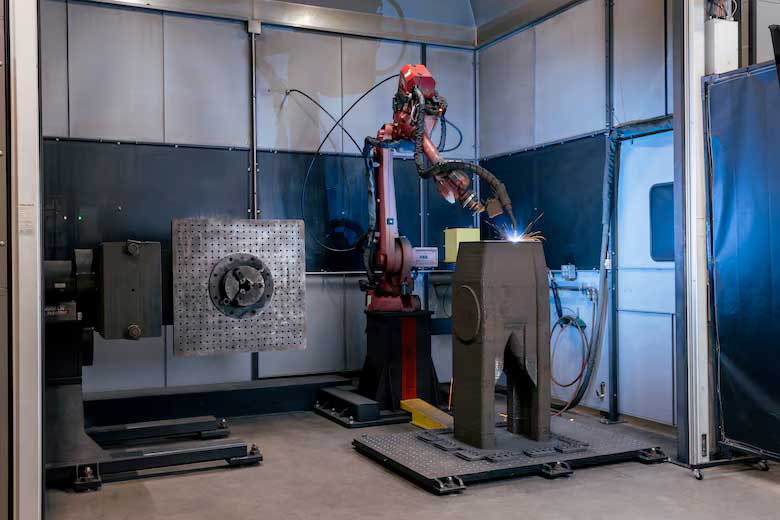The US Army Corps of Engineers (USACE) has produced a metal part for the ship arrest system using wire arc additive manufacturing.
In March, the USACE Detroit District installed the largest 3D-printed civil infrastructure component in the U.S. – a 12-foot-long metal part for the ship arrest system at Poe Lock, one of the two active locks at the Soo Locks complex. Based on years of research by the U.S. Army Engineer Research and Development Center (ERDC), the part was manufactured in 12 weeks – compared to 18 months estimated for conventional manufacturing. It was installed and commissioned during the Soo Locks’ winter maintenance period.
This quick repair ensured normal operations at Poe Lock, a major transit point for domestic iron ore. An unexpected closure would have been “catastrophic for the nation,” according to a 2015 Department of Homeland Security (DHS) study.
“We secure our nation and energize our economy by operating, maintaining and preserving strategic water resources and infrastructure,” said Lt. Col. Brett Boyle, commander of the USACE Detroit District. “That is a challenge as our infrastructure continues to age. These challenges are opportunities to deliver our program in new, innovative ways that make us more efficient. The Poe Lock ship arrestor project has been one such opportunity for our team to work with ERDC researchers to harness existing 3D-printing technology in a way that safely delivered superior quality, while cutting through the extended lead times of today’s environment.”
“Roughly 88% of domestically produced high-strength steel used to manufacture products like automobiles and appliances is made with iron ore that transits the Soo Locks,” Detroit District Senior Project Manager Mollie Mahoney said.
The project demonstrated a strong collaboration between the ERDC’s experience in additive manufacturing, the Detroit District’s deep knowledge of the Soo Locks and the application needs for the tentacle, and Lincoln Electric’s expertise in manufacturing and welding large components.
“There are only a handful of places in the world that can print a metallic part at this scale, and a lot of those parts tend to be cylinders,” said Dr. Zack McClelland, a research engineer at ERDC. “The Poe Lock arrestor arm really shows what can be done with the technology in terms of complex designs, and it signals a paradigm shift in how large parts can be manufactured.”
“We have been trying to advance the scale and reduce the cost using new approaches for manufacturing,” said Dr. Robert Moser, ERDC Senior Scientific Technical Manager for Materials, Manufacturing and Structures. “A lot of our research has gone into investigating the best parameters to produce some of the metals we want and to ensure we minimize any defects that would affect strength or fatigue. We have to validate the mechanical performance of those parts and ensure they are as good as or better than the parts we already have. In this case, it was at least 20- or 30-percent stronger than the metals that were previously being used.”
The USACE’s advanced additive manufacturing capability reduces component procurement time from months to days, improving the reliability of critical flood control and navigation infrastructure, protecting communities and promoting economic growth.
Subscribe to our Newsletter
3DPresso is a weekly newsletter that links to the most exciting global stories from the 3D printing and additive manufacturing industry.






















